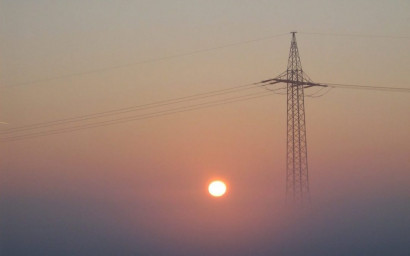Solar may cover 75% of global electricity demand by 2050
 Solar could also reach a 69 per cent share of the total primary energy supply by the end of the first half of the century, according to a new report from the Lappeenranta University of Technology. By 2050, solar PV is projected to have a CAPEX of €246 per kW-installed for utility-scale projects and €537 per kW for residential arrays. However, the Levelized cost of energy (LCOE) is projected to remain constant over the next three decades, as the energy transition will include storage technology, increased flexibility, and synthetic fuel processing. According to a new study from the Lappeenranta University of Technology, solar could account for 69 per cent of the total primary energy supply by the end of the first half of the century. Solar PV is expected to cost €246 per kW installed for utility-scale projects and €537 per kW for residential arrays by 2050. However, since the energy transition will require storage technologies, improved flexibility, and synthetic fuel production, the levelized cost of energy (LCOE) is expected to remain constant for the next three decades. End-use industries such as transportation and heating are almost entirely electrified in the planned scenario, which achieves the goal of limiting global warming to 1.5 degrees Celsius. Despite the sharp drop in the cost of solar and other renewables-generated electricity, the levelized cost of energy (LCOE) of the entire system is expected to remain constant over the next three decades, at between 50 and 57 €/MWh, as the energy transition will also include storage technology, increased flexibility, and the production of synthetic fuels. Professor Breyer told PV magazine, "We no longer consider single-technology LCOE, but least-cost energy system solutions, which changes the emphasis on[to] integrated solutions." The capex of all technologies needed for system LCOE was, however, indicated in the report. Breyer said, "The PV capex is the most definitive." Capex for a residential PV project, for example, is expected to drop from €1, 169/kW-installed in 2020 to €826 in 2030, €650 in 2040, and €537 in 2050, according to the group’s estimates. By 2050, commercial PV is projected to cost €397 per kW installed, up from €907 in 2020, €623 in 2030, and €484 in 2040. The capex for industrial roofs is expected to fall from €682/kW-installed in 2020 to €459 in 2030, €353 in 2040, and €289 in 2050. The group looked into the large scale market and given prices for two types of PV plants: fixed structure and single-axis trackers, and discovered that the second category would see a price drop from €638 per kW built-in 2020 to €429 in 2030, €330 in 2040, and €271 in 2050. From €580 in 2020 to €390 in 2030 to €300 in 2040, the first group is expected to achieve a capex of €246/kW-installed. The study also predicts that renewable-powered desalination would be able to solve the water shortage problem by supplying 3 billion cubic meters of clean water every day, as well as the complete implementation of power-to-x technology. "According to IPCC sources, the findings of our analysis identify a scenario that has been claimed as impossible, " Breyer said. "We are, however, able to demonstrate that the climate goals can be reached without raising the [cost] per unit of energy by… extensive direct and indirect electrification of the energy grid, as well as renewables-based electricity supply." |














